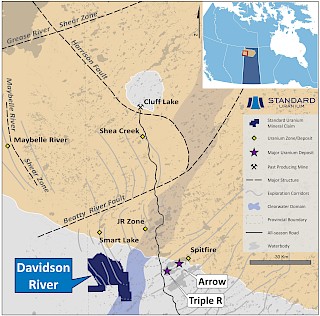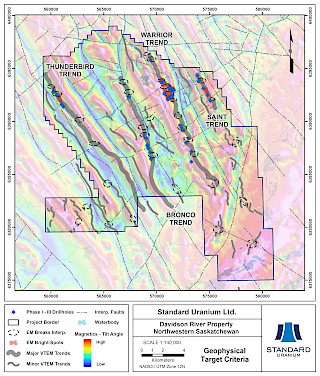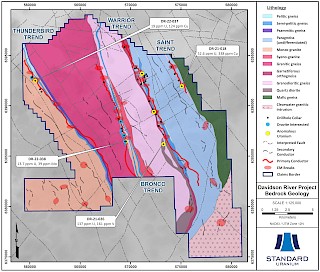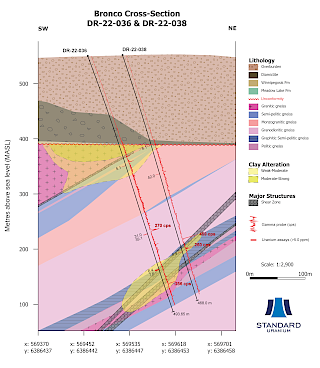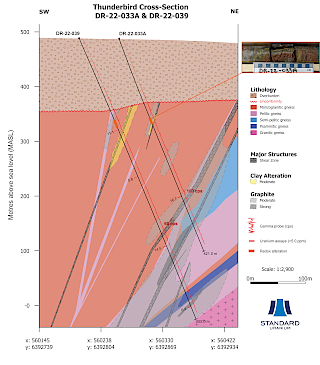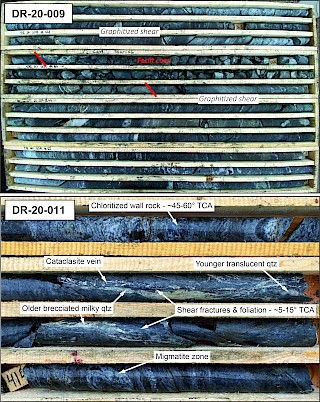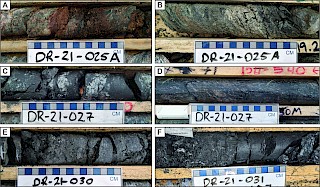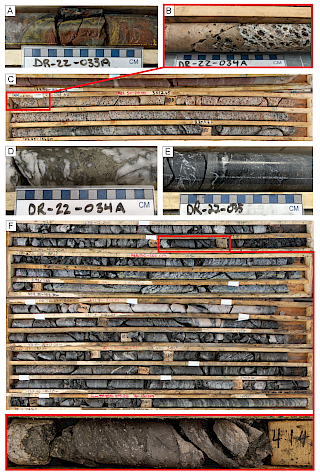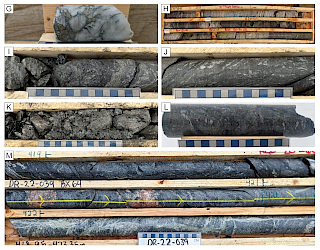Davidson River Project
Presentation: A Multiphysics Approach to Basement- Hosted Uranium Targeting at the Davidson River Project, Northern Saskatchewan
Davidson River is Standard Uranium’s flagship property, located in the southwest Athabasca uranium district of the Athabasca Basin, Saskatchewan, and encapsulates the inferred extension of the structural trend that hosts Fission Uranium’s Triple R deposit and NexGen Energy’s Arrow deposit (Figure 1). The project consists of 10 contiguous mineral dispositions totaling 30,737 hectares and lies approximately 25 to 30 km west of Arrow and Triple R and 75 km south of the past-producing Cluff Lake uranium mines. The Company has completed 16,561 metres of diamond drilling in 39 drill holes on the Davidson River property since 2020, which has further refined the exploration strategy for high-grade basement hosted uranium mineralization on the property. The flagship property hosts four main conductive corridors – the Warrior, Bronco, Thunderbird, and Saint trends (Figure 2). All four geophysical corridors contain several target areas favorable for high-grade basement hosted uranium mineralization.
In 2018 and 2019, the Company conducted geophysical surveys that identified prospective signatures for uranium mineralization associated with the four main conductive corridors. These conductive trends are associated with graphitic-sulphidic structures in basement rocks, which are commonly associated with high-grade uranium mineralization systems. This concept has been proven for all four corridors, with several instances of graphitic-sulphidic fault rocks and reactivated structures intersected along the tested strike length.
Favorable basement rock types and alteration phases have been observed across the strike length of the main trends, resembling those which host other uranium deposits in the southwestern Athabasca Basin region. Key indicators include clay-dravite alteration and stacked lenses of variably strained graphite and sulphide-bearing garnetiferous gneisses and altered feldspar-rich rocks. Elevated uranium values in the basement rocks are dominantly associated with deformed metasedimentary units and coarse-grained pegmatites. Structural zones in the basement are locally associated with elevated uranium and/or boron values (over 1,000 ppm B), such as in DR-20-009 and -011 (Photo 1).
The results from the 2020-2022 diamond drilling programs highlight the potential for the Davidson River property to host significant basement hosted unconformity-related uranium mineralization, and the property contains several priority targets along all four trends that warrant further exploration. Target areas on the property have been identified to follow up on major graphitic-sulphidic basement structures and anomalous geochemical signatures. In addition, continued exploration will branch out to the largely untested Thunderbird conductive trend (Figure 3). The project and drill core storage can be accessed via the Davidson River access trail from Highway 955.
Maps & Figures
Disclosure of Technical and Scientific Information
Except as otherwise noted herein, Sean Hillacre, MSc. P.Geo., Standard Uranium’s VP Exploration, has reviewed and approved the scientific and technical information contained in this website. Mr. Hillacre is a Qualified Person within the meaning of Canadian Securities Administrator’s National Instrument 43-101.

